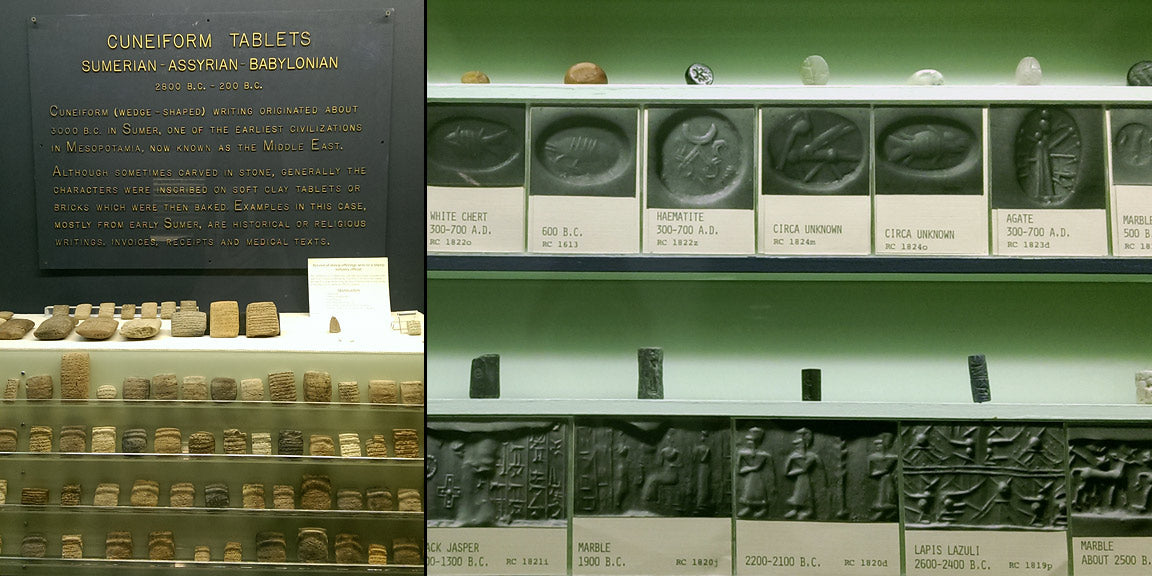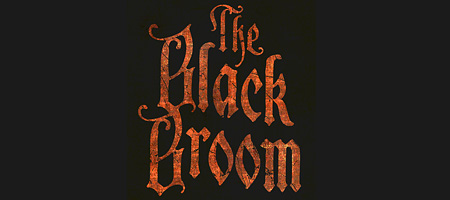Regardless of how popular and equally infamous Pazuzu is, it was surprisingly tough to find much differing information about this deity. I wanted to dig a bit below the surface which customarily portrays Pazuzu as a demon of the southwestern winds who brought drought and disease, and in more recent times, the possessor demon in one of my all-time favorite films The Exorcist. Why was Pazuzu, an “evil” demon, so relied upon and held close by ancient peoples who were scared of demons? The idea of light versus dark does not play a role in this scenario. Instead, what we have here involves a dark force versus perhaps a darker force. An unconventional use of logic applies which is what makes Pazuzu so intriguing!
In order to get a better understanding of Pazuzu’s significance in history, we should travel back to the time where he was originally prominent. The Sumerians invented the earliest writing system, the cuneiform script. It is from the Sumerian and Babylonian inscriptions found on various tablets we learn of Babylonian and Assyrian magical practices and their import. According to these writings, they lived in a constant trepidation of the evil eye, hostile spirits, and fierce demon gods. The most feared demon of the time must be mentioned before we get to Pazuzu. This is the one who people were too afraid to even mention by name. Lamashtu (also Labartu), daughter of the great Babylonian sky-god Anu, was alleged to cause miscarriages, kill infants, kidnap children, cause nightmares, slaughter livestock in addition to many other harrowing deeds. She was their ever-looming boogeyman. Because the malevolent power of this deity struck so much fear upon the population, a whole array of spells, rituals, incantations, and use of amulets were used to protect against her. Another method was to present her with particular gifts as to cajole her back into the Underworld. Aside from the numerous magical workings was the widespread employment of her arch-nemesis Pazuzu.
At the Rosicrucian Egyptian Museum in San Jose, CA, I took some photos of their large collection of cuneiform tablets and bricks, as well as cylinder seals and seal rings.

Pazuzu was used to counter the dreaded Lamashtu’s efforts. Plaques found in archaeological sites show the attempts to avert her attacks with likenesses of Pazuzu. It is unclear as to why they were at such odds, but that was the belief. For the many who lived in mortal fear of Lamashtu, Pazuzu was their champion. Clay heads, statuettes, and etched amulets of Pazuzu were used in a variety of ways, and these pieces were among the most often found artifacts. In Sir E. A. Wallis Budge’s book Amulets and Talismans, it describes an image of Pazuzu found on a plaque with him on one side and Lamashtu on the other as, “an animal demon, standing upright with the two fore-paws resting on the upper edge of the plaque, which also supports the head of the monster… The body is that of a lion, and is covered in scales and has four wings. The head has a pair of ram’s horns, which lie flat on the sides of the head, the eyes are round and fierce, and the shape of the mouth shows that the lion is supposed to be roaring. His tail is a scorpion, and the phallus, which lies along the lower part of the belly, terminates in a snake’s head. His hind legs have the claws of a bird of prey instead of feet.” The plaque’s inscription reads, “I am Pazuzu, the son of Hanpu, king of the evil spirits of the air; I go forth from the mountains raging like a whirlwind.” Statuettes of Pazuzu were placed in hollowed bricks to be used in the construction of houses. Excavated ruins revealed Pazuzu’s clay heads imbedded in walls while amulets or talismans were worn on the body. This proves a very strong belief of magical power inherent in such items.
Below is an example of a clay Babylonian statuette (c. 3000 BCE) of Anu, the god of wisdom. It is one of the earliest known images from southern Babylonia. Known as Oannes to the Greeks, Anu is depicted with a long beard and curls at the sides of his head.

Some additional thoughts… When I look at a statue of Pazuzu, I can’t help but notice a similarity with the image of Baphomet which emerged much later in history. This is in the positioning of the hands. The right hand is raised while the left hand is lowered. Solve et Coagula. As above, so below. Another curious thing to consider is that Lamashtu, a female deity, terrorized this society. It is interesting that at this point in history, a female demon could strike as much fear as a male rival and in this case, even more so. Later in the era of the witch trials, for example, women were seen as only having the capacity of being subservient colluders to a male devil, never having equal or greater power. The final note is in regards to Pazuzu’s role in The Exorcist. I discussed this with a friend, and the burning question was why wouldn’t they instead have used Lamashtu who preyed upon expecting mothers and their children?
Thanks for reading!
If you search through our store, you will find many Pazuzu items we make from jewelry to statuettes to belt buckles!
